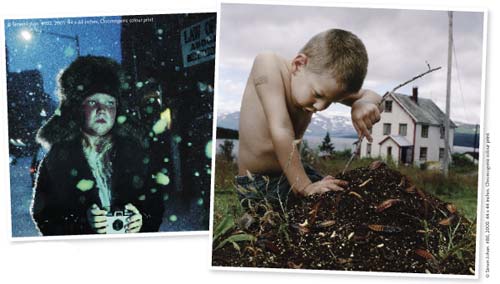An Alternative View…Simen Johan

At the dawn of photography, William Henry Fox-Talbot, Louis Daguerre and Sir John Herschel speculated about the medium’s future as a vehicle to integrate art and science. During their era photography was considered a quantitative way of knowing the world, recording subject matter in an empirical, scientifi c manner.
Today digital imaging forces us to confront how a photograph’s objective elements grant it authority and what happens when these components are questioned. Without an original negative there is no anchor attaching a subject to an actual occurrence. The malleability of the digital picture encourages constant readjustment of reality to suit the needs of the moment. This is particularly unsettling when one tries to determine the accuracy of journalistic images.
The ability to easily manipulate images encourages certain artists, such as Scandinavian Simen Johan, to grapple with the inwardness of a subject that lies beyond its external structure. Johan discusses why he constructs pictures that dwell at these crossroads of inner and outer reality.
Why are children your principal subjects?
My concern lies in human psychology – how we act and think spontaneously. I use children as characters because they act on intuition and impulse. We’re all extremely fragile and no matter how much we think we are in control, deep down we’re like children who haven’t fi gured out who they are or what they’re doing in this world. We can say our purpose in life is this or that; the only thing we know for sure is that our needs and urges motivate us to live, but why? We don’t know.
What are you conceptually striving for?
I’m exploring how the unknown haunts us and motivates our actions. In my last two series, Evidence of Things Unseen and Breeding Ground, I envision imaginary children refl ecting upon the perplexities, cruelties and ironies of the world through imagination and play, which like religion, science and creativity, are fuelled by the human need to understand the world. These images refl ect my own need to understand life by creating art.
How do you put your images together?
My images end up different from my original intention. Sometimes I start with an idea and search for the elements I need to develop this idea; other times I start with a photograph I have already made. Other times I find a location that inspires me to create a sitespecific installation. Often an image can be composed of one to ten different images that have been rephotographed several times to get the light and camera angle just right. I’m never sure how to create what I want until I have worked through the imagemaking process. Only then does everything make sense.
What’s the thought and process behind #86?
This image is a metaphor for the creative process. In Norway I photographed a boy playing with a bird. Later I rephotographed a boy in New York and had him dig in a pile of dirt with bugs. This image could refl ect the boy’s boredom, or maybe it’s his urge to investigate his surroundings. I do not title my images because they have many interpretation possibilities.
How do you envision the future of photobased image making?
Traditional fi lm and paper photography will be used less, except for by artists. That said, ‘straight’ photography will remain popular because it portrays reality and reality is not out of fashion. I envision a more relaxed attitude towards technique. People will appreciate images for what they represent, regardless of whether they’ve been manipulated or not. Computers have given photography the freedom of painting, whereby photographs can truly represent the ideas of their creators and not merely render what already exists. This will lead to many new image possibilities that are different from anything we have yet seen.
![]()
